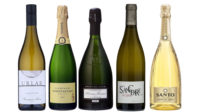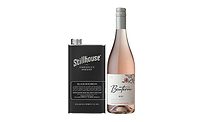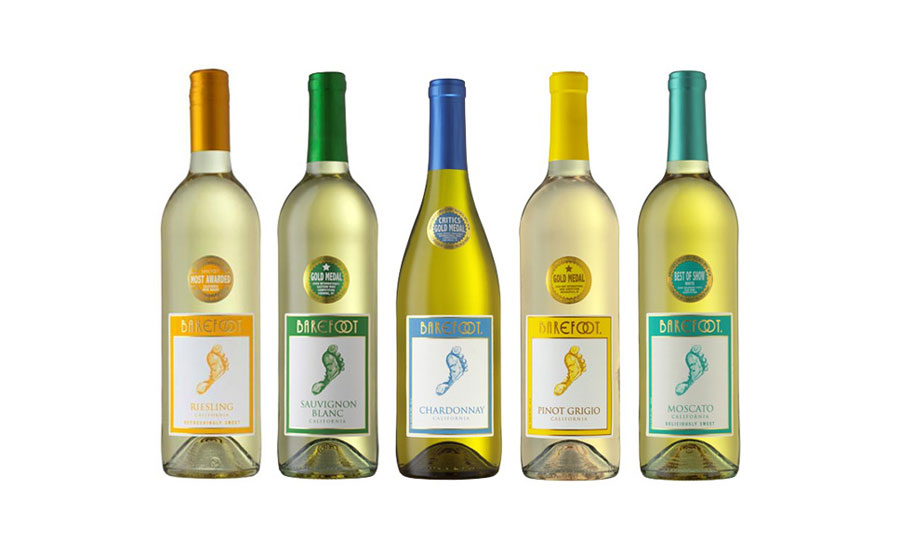2020 State of the Beverage Industry: Consumer preference grows wine, spirits categories
Taste, convenience and pandemic impact alcohol sales




Swings and shifts impacting the wine and spirits categories are ongoing, with recent trends influenced by preference, packaging, taste and technology. A triple-digit surge in sales off-premise due to the COVID-19 pandemic also is helping to bolster wine and spirits.
Pune, Maharashtra, India-based Global Market Insights (GMI) Research Content Developer Saloni Walimbe said wine consumption in the United States stood at 966.09 million gallons in 2018.
Chicago-based Information Resources Inc.’s (IRI) reports that the table wine market grew 6.4 percent and reached $11.2 billion in sales in U.S. multi-outlets and convenience stores for the 52 weeks ending May 17, while sparkling wine/Champagne posted $1.3 billion in sales, a 13.1 percent increase over a year ago.
COVID-19 and a two-month lockdown also has sparked triple-digit growth in alcohol sales through eCommerce, alcohol delivery apps like Drizly and Vivino, and virtual “Happy Hours” and tastings. When comparing dollar sales percentage growth versus a year ago, the overall alcohol category is seeing triple-digit success off-premise. Spirits were up 374 percent, while wine and beer were up 242 percent, respectively, New York-based Nielsen reported in the June issue Beverage Industry.
In that same issue, Nielsen reported that total alcohol sales in aggregate from its in-store retail measurement reported that total alcohol was up 25.5 percent, wine was up 30.1 percent and spirits were up 34.1 percent from March 7 through the week ending May 7 – when COVID-19 was heavily impacting consumer behavior.
Earlier in the year, wine sales were not as robust. In Beverage Industry’s February issue, IRI Client Insights Director Cara Piotrowski noted that wine looked to be softening, evidenced by its 2.2 percent year-over-year dollar growth as of December 2019. However, the current outlook is brighter at a nearly 7 percent increase in sales compared to the prior year, as of May 17, according to IRI’s latest data.
(Individual brands)
| DOLLAR SALES | % CHANGE VS. PRIOR YEAR | MARKET SHARE | % CHANGE VS. PRIOR YEAR | |
| Whiskey | $2,913,820,354 | 15.2 | 34.77 | 0.21 |
| Vodka | $2,245,543,344 | 9.7 | 26.79 | -1.18 |
| Rum | $672,675,030 | 7.6 | 8.03 | -0.52 |
| Tequila | $662,603,640 | 25.1 | 7.91 | 0.67 |
| Cordials | $568,842,001 | 13.4 | 6.79 | -0.07 |
| Category total* | $8,381,021,701 | 14.5 | 100 | --- |
*Includes brands not listed.
Source: Information Resources Inc. (IRI), Chicago. Total U.S. supermarkets, drug stores, gas and convenience stores, mass merchandisers, military commissaries, and select club and dollar retail chains for the 52 weeks ending May 17.
GMI’s Walimbe noted that growth in domestic wine indicates promise for the channel, particularly because recent tariff modifications could impact imported wine.
"Domestic table wines are a fundamental growth driver for the U.S. wine market, with newly imposed tariffs slightly blurring the business outlook of imported wines,” she explained.
Premium wines are trending, according to IRI’s Piotrowski, who noted that luxury table wine priced between $20-$24.99 was the fastest growing segment at 10.2 percent.
Packaging also is influencing consumer purchase patterns within the wine market. Piotrowski noted that wines sold in cans totaled $86.7 million in 2019, a 91.7 percent increase over the prior year.
Another trend impacting wine consumption is off-premise purchasing online and via delivery apps. For instance, Boston-based Drizly reported sales were up 535 percent over their baseline the week of April 19, with new buyer sales up 1,200 percent from the year prior.
The spirits market also shows to be prospering, posting $8.4 billion in sales, an increase of nearly 15 percent compared with the year prior, according to IRI’s data for the 52 weeks ending May 17.
IRI also identified consistent sales growth from each segment for the 52 weeks ending May 17:
- Whiskey — up 15.2 percent
- Vodka — up 9.7 percent
- Rum — up 7.6 percent
- Tequila — up 25.1 percent
- Cordials — up 13.4 percent
- Pre-mixed cocktails — up 45.6 percent
- Brandy/cognac — up 10.6 percent
- Non-alcohol mixers — up 15.3 percent
- Gin — up 12.7 percent
Although vodka maintained favor with consumers in 2019 with 31 percent of market share, whiskey currently holds the No. 1 spot with approximately 34 percent of the market share and $2.9 billion in sales.
Brown spirits outpaced white spirits for the seventh consecutive year in 2019, driven by both domestic and imported whiskies,” said Carolyn Lemoine, director of alcohol research for New York-based Beverage Marketing Corporation (BMC), in Beverage Industry’s April issue.
(Individual brands)
| DOLLAR SALES | % CHANGE VS. PRIOR YEAR | MARKET SHARE | % CHANGE VS. PRIOR YEAR | |
| Barefoot | $672,997,168 | 1.1 | 5.98 | -0.31 |
| Sutter Home | $397,602,716 | 1.4 | 3.53 | -0.17 |
| Franzia | $364,897,530 | 8.4 | 3.24 | -0.06 |
| Woodbridge | $364,002,556 | 4.6 | 3.24 | -0.06 |
| Josh Cellars | $279,582,860 | 35.4 | 2.49 | 0.53 |
| Category total* | $11,248,497,905 | 6.4 | 100 | --- |
*Includes brands not listed.
Source: Information Resources Inc. (IRI), Chicago. Total U.S. supermarkets, drug stores, gas and convenience stores, mass merchandisers, military commissaries, and select club and dollar retail chains for the 52 weeks ending May 17.
When it comes to what’s driving segment performance, Mintel suggested in Beverage Industry’s April issue that the five-year growth of both on- and off-premise spirits sales was anchored by robust whiskey sales.
"The $67 billion spirits market has shown strong growth during the five-year review prior, and positive growth is forecast through 2024,” stated Chicago-based Mintel’s December 2019 “Dark Spirits – US” report. “Spirits sales growth has outpaced that of the largest alcoholic beverage category, beer, and in 2019, its dollar sales overtook that of wine.
“… American whiskey/bourbon has been a key driving force in dark spirits, which has been trending for the past five years, and is forecast to continue to do so,” it continued. “While brandy, cognac and Armagnac is a smaller segment, it has also enjoyed steady five-year growth, bolstered by innovation and the engagement of women.”
Moving forward, BMC’s Lemoine noted the explosion in ready-to-drink (RTD) cocktails and the segment’s ability to tap into several mega-trends: canned products with low- or no-alcohol.
"RTDs tend to be lighter in alcohol and lower in calories and sugar,” she explained. “RTD cocktails are premiumizing, as consumers look for unique offerings and diversification, classic cocktails with a modern twist that may be spirits, malt or wine based.”
Experts noted that shoppers seeking flavorful offerings across all beverage alcohol categories will continue to drive flavor-forward wine and spirits. Brands that implement digital purchasing options with strategic marketing also could fuel sales for those platforms.
Looking for a reprint of this article?
From high-res PDFs to custom plaques, order your copy today!








